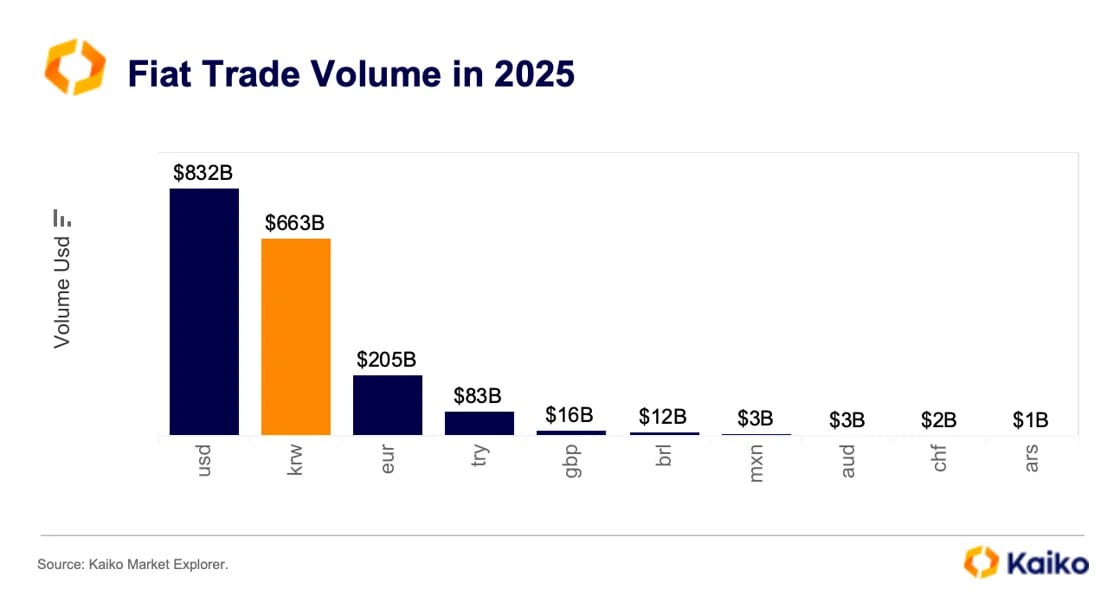
Stablecoins Are Redefining Dollar Dominance in Crypto
According to Kaiko, trading volume in Korean won is now almost on par with USD in the crypto market.
At first glance, this might seem surprising. After all, everything in crypto is usually priced in dollars, and the USD feels like the undisputed king of fiat in this space.
But here’s the twist: it’s not the won that’s replacing the dollar. It’s stablecoins.
Stablecoins have eaten away a huge share of dollar-denominated trading volume - and that’s exactly what allowed the won to catch up.
Most stablecoins are pegged to the USD. And a huge chunk of what used to be “dollar trading” has quietly shifted to USDT, USDC, and other stablecoins.
Why? Because the dollar, as an actual currency, isn’t really needed in crypto. It’s not used for payments. It’s mainly a unit of account - something to measure profits, losses, and hedge positions. And stablecoins do that job just fine. In fact, they offer way more flexibility and freedom than traditional banks ever could.
Now ask yourself - have you ever seen a stablecoin pegged to the Korean won? I haven’t.
On rabbit.io, we support swaps across a wide range of stablecoins - but almost all of them are USD-based. So when someone needs to lock in gains in won, they have no choice but to deal with actual bank transfers.
And it’s that shift that’s narrowing the gap between USD and KRW trading volumes.













